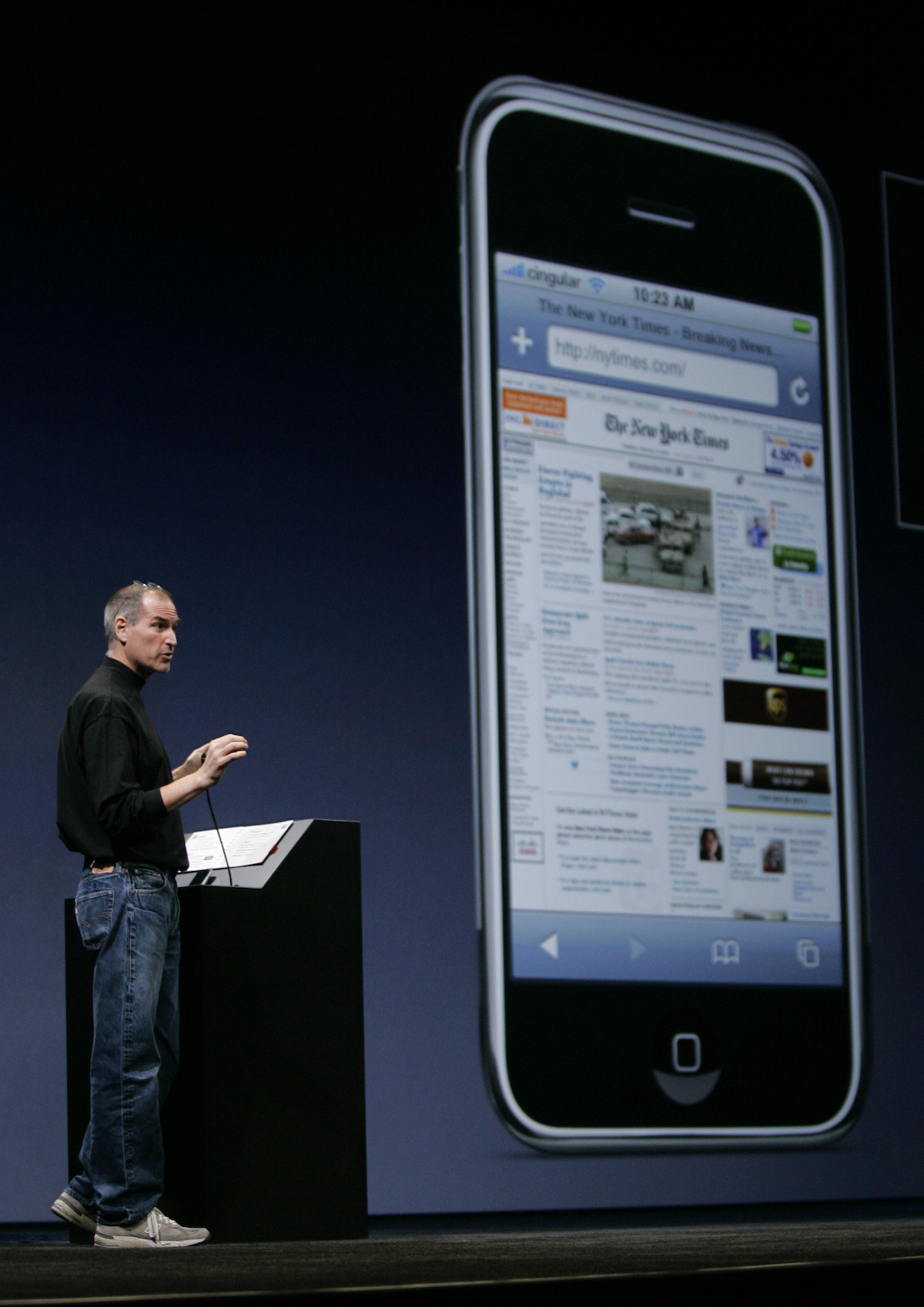
Editor’s note: The new issue of our sister publication Nieman Reports is coming out soon; keep an eye on their website as new articles are posted in the coming days and weeks. I write a column for the print edition of the magazine; here’s mine from the new issue.
I’ve spent the past few weeks with a town crier attached to my wrist.
Or at least that’s the best metaphor I can come up with for what wearing an Apple Watch does for (to?) a news-interested consumer. It’s tweaked the modern American condition — constantly fiddling with your smartphone — with a system of thumps and buzzes that grab your attention whenever an app believes it deserves it. It is simultaneously a marvel (a powerful little computer, attached to my arm!) and a bore, a transference of focus from a nice 4.7-inch screen to a tiny 42-millimeter one.
The arrival of any new class of devices leads the journalism-inclined to ask: What does it mean for news? And today, at least, the answer is: not much. Only a small share of news consumers will have a smartwatch in the immediate future. The first class of news apps, from all the usual big players, are annoying to launch, clumsy to navigate, and shallow in content. (For what it’s worth, I think The New York Times’ “one-sentence stories” and NPR One’s focus on audio make them the early leaders.) Reading anything more than a glance on your wrist is surprisingly tiresome; a headline and a sentence are probably all you’ll stand for before just whipping out your phone.
What the Apple Watch is really good at is notifications — getting your attention. And that’s important. The shift to digital has pushed news from a scheduled activity — a morning newspaper, an evening newscast — to a constant background noise, something you dip into or stumble upon irregularly. The art of usefully interrupting someone with news is turning into one of this century’s key journalistic skills.
And anyone whose memory stretches back more than a few years should hesitate to dismiss the Apple Watch too quickly. When the iPhone debuted in 2007, plenty thought it as a rich geek’s plaything, a niche product for Apple’s fan club. There were no apps! Data networks crawled! When Steve Jobs showed off what news would look like on his shiny new slab of glass, he pulled up NYTimes.com in a web browser — headlines illegible, shrunk to the size of atoms — and described a world where reading news on a phone meant a thousand pinches in and out.

Steve Jobs showing off NYTimes.com at the first iPhone keynote, 2007.
(“It’s kind of a slow site, because it’s got a lot of images,” Jobs said at the time — perhaps the first public complaint of a news site loading too slowly on mobile.)
Even among those who saw the iPhone’s potential, few would have guessed that, in less than a decade, it would become the primary way many people — particularly young people — get news. Or that the iPhone (and other devices modeled on it) would be driving the majority of traffic to many news sites. Or that it would create entirely new interface paradigms for accessing news and other information.
So while the Apple Watch seems more interesting than important in 2015, it’s easy to imagine looking back on today five or six years from now and thinking: Why didn’t we pay more attention? (News companies don’t exactly have the best track record of anticipating future change.)
So let’s try to imagine what that future vision of the news experience on a smartwatch might look like — and see what’s standing in the way.
It’s 2020. A light but persistent buzz on your wrist wakes you up at 6 a.m. After giving you a few seconds to yawn and stretch, your watch shows you the few headlines you need to know about this morning.
It’s been storing up breaking news stories overnight, but it knows enough about your news habits — what topics you care more or less about, what outlets you prefer, what stories you’ve been keeping up with — that it can judge what’s worth telling you about. Today, it guesses you won’t be interested in that big national security scoop, but that you will care about the bizarre double homicide two towns over from the place where you grew up.
If the news is truly big — say, Osama-raid big — you’ll hear about it no matter what. But in the great muddle of daily news beneath that, the device will pick and choose.
Your waterproof watch goes with you into the shower, where it plays you NPR’s morning news package — or, just as likely, a curated audio package of headlines derived from a morning email newsletter you like. The newscast is timed to the usual length of your shower. After you towel off and get dressed, another newscast — a little more feature-driven, more tied to your interests — sticks with you through your commute to work, where it’s piped into your car stereo.
At work, your day of answering email is interrupted a couple dozen times by that familiar buzz. But most of them are for bits of information personal to you — texts you need to see, Slack notifications from your boss, meeting reminders, a nudge to pick up bananas on the way home. Only a couple are reserved for news on most days. And even then, the watch is smart enough to know you don’t need to see the same story pushed breathlessly by ten different news outlets.
The watch knows you well enough to know when you might have time to read a little. It can tell when you’re grabbing lunch alone, checking for the absence of any friends or coworkers nearby, or when you’re locked in a meeting. When it thinks you’ve got a moment to spare over a sandwich, it reminds you of that good 15-minute read you heard about but didn’t get time to read yesterday.
In the evening, when you’re having dinner with your family, it knows not to bug you with anything less than big news. (It knows you’re in the dining room and can detect your teenage son’s cell phone stationary across the table from you — a rare feat.)
When you’re getting ready for bed, right after it lets you know what’s on deck for tomorrow, it serves up a nice, quick, light feature story that it thinks you’ll enjoy right before dozing off. Then it’s off to sleep, and the cycle repeats.
So what’s standing between today and this sort of smartwatch future? There are boring technical answers: faster processors, better networks. But the real hurdle is intelligence. Personalization. Data. Making those judgments — what you’re interested in and in what context — will require huge amounts of user data. These devices will be personalized in every other important way — your messages, your fitness, your heartbeat — and it’s unlikely smartwatch users will stand for a one-size-fits-all package of news.
If that’s the future, who’ll be in the best position to collect and act on all that data? It’s not going to be your local daily newspaper publisher, and it probably won’t be the major national news brands. It’ll be technology companies: the people behind social networks and the devices they run on. That’s not new — it’s an extension of the power shift we’ve already seen on phones — but it’s discouraging for companies that hope to have sustainable businesses around producing news.
Maybe smartwatches will be a fad, our era’s pet rock, and how news plays on them won’t matter. The move from the desktop web to phones has been huge; the move from phones to watches is…of undetermined size at this point. Most likely, the smartwatch will end up ranking in impact somewhere on the spectrum between the iPhone (huge) and Google Glass (laughable) — but where, exactly, is unknowable.
But the problem the watch outlines — that news companies don’t know enough about their readers — is a very real one. It’s a problem for advertisers; it’s a problem for building audience; it’s a problem for customizing information that meets readers’ needs. And that’ll be true no matter what’s on people’s wrists next year.